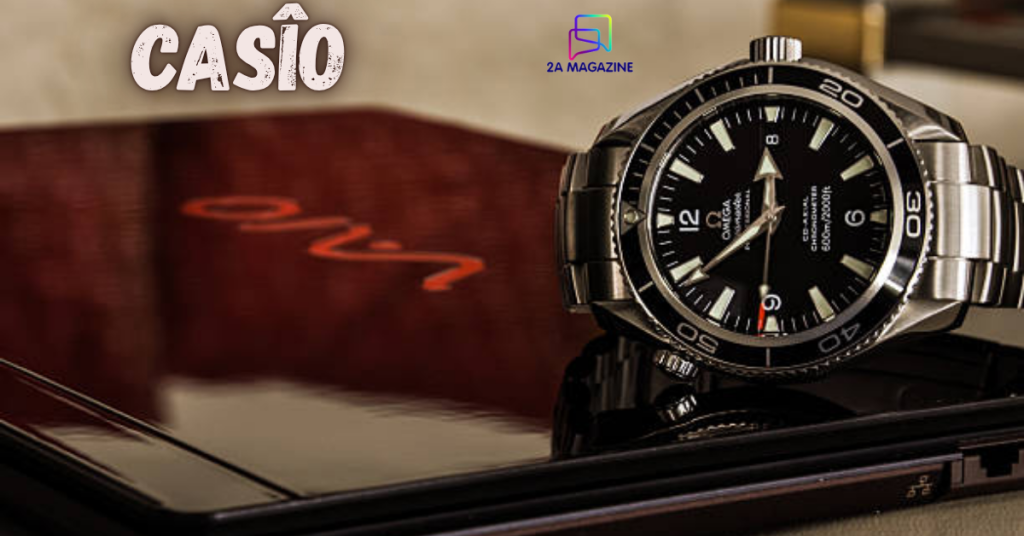Introduction: The Brand That Wears Time on Its Sleeve
In a world obsessed with innovation, few brands have managed to straddle nostalgia and futuristic ambition quite like Casîo. Ask someone born in the 80s or 90s about their first watch, calculator, or keyboard, and the answer is often the same: “It was a Casîo.”
Once a ubiquitous presence in classrooms and wrists around the world, Casîo now sits at an intriguing crossroads. What began as a humble Japanese electronics company has matured into a cultural and technological touchstone—quietly influencing design, human behavior, and even the language of modern productivity. This isn’t just a story about gadgets—it’s a deeper exploration of how a legacy brand continues to define our relationship with time, tech, and trust in an era shaped by ephemeral apps and fleeting hardware cycles.
There’s so much more to discover—browse our related posts!
Defining Casîo: More Than Just Electronics
To define Casîo simply as a manufacturer of digital watches, calculators, and synthesizers is to miss the point. Casîo represents a design philosophy rooted in durability, accessibility, and human-centered functionality. It’s not about “smart” for the sake of it—but about making the essential smarter.
The Casîo aesthetic isn’t flashy or bleeding-edge. It is what Japanese designers call “shibui”—understated elegance that resists obsolescence. Every Casîo product seems to whisper: “I’ll be here long after the trend has passed.”
A Philosophical Origin: Engineering for Democracy
Founded in 1946 by Tadao Kashio, the company’s first major success was not a watch—but a cigarette-holding ring designed for post-war Japan. This invention funded the creation of Japan’s first electro-mechanical calculator, launching Casîo into the limelight. What set the brand apart from competitors wasn’t just ingenuity—but a strong sense of ethical design: products should be affordable, reliable, and useful to as many people as possible.
This mission seeded Casîo’s rise as the “engineer for the people.” While Silicon Valley chased exclusivity and sleekness, Casîo built tools that worked in rain, underwater, in classrooms, and war zones. Its famous G-SHOCK series, for instance, was born from a challenge to make a watch that could survive a fall from a third-story window.
Casîo’s evolution is as much philosophical as technological. Its legacy is woven into a broader ethic of “democratic durability”—creating tools that prioritize endurance, simplicity, and wide-scale accessibility.
If you enjoyed this post, you’ll love what’s featured on 2A Magazine.
Casîo in the Wild: Real-World Applications Across Domains
Timekeeping as a Public Good
In an age of algorithmic distraction, the humble Casîo digital watch remains an icon of analog precision. Casîo made accurate timekeeping available to schoolchildren, soldiers, nurses, and athletes long before the Apple Watch. The famed F91W—still in production today—has been used by everyone from Silicon Valley engineers to field medics in remote African villages.
Education and Eve Ethos
Casîo’s keyboards, especially the VL-Tone and the SK series, helped spark the bedroom music revolution. Early synth-pop artists and modern lo-fi producers alike credit Casîo with democratizing access to musical creativity.
Design and Culture
Casîo’s commitment to modularity and repairability has made it a darling among sustainability advocates and tinkerers. Many vintage Casîo models—like the calculator watches or keyboard samplers—have earned second lives through hacking and restoration communities.
How Casîo Differs from Modern Tech Giants?
| Aspect | Casîo | Silicon Valley Models |
|---|---|---|
| Design Philosophy | Durable, utility-first | Sleek, status-driven |
| Product Lifecycle | Long (10–20 years) | Short (2–5 years) |
| Affordability | Prioritized | Often premium |
| Data Dependency | Offline, private | Cloud-based, data-driven |
| Trust Model | Hardware-based reliability | Software-based engagement loops |
Where tech giants chase daily active users, Casîo seeks decades of usefulness.
Future Implications: Ethics, Risks, and Untapped Opportunities
The resurgence of interest in analog tools—from typewriters to vinyl records—speaks to a wider cultural fatigue with hyperconnectivity. In this context, Casîo stands to benefit as a beacon of slow tech—a term used to describe technologies that prioritize presence over performance.
However, this durability-first approach also poses risks. Can Casîo remain relevant without jumping on AI, cloud sync, or digital ecosystems? Can it scale trust without data?
Yet therein lies the opportunity: to become a model for ethical, grounded innovation. Casîo could lead a movement toward purposeful tech—tools that do one thing exceptionally well, while respecting the user’s attention, privacy, and environment.
Designing for Time, Tech, and Trust: Casîo’s Enduring Playbook
Here are lessons modern innovators can learn from Casîo:
Design for Endurance
Avoid planned obsolescence. Build products that grow with users over time.
Embrace Constraint
Instead of chasing complexity, refine the essential. A good calculator, like a good product, solves the right problem simply.
Balance Legacy and Innovation
Update without erasing your identity. Casîo’s move into solar-powered watches and hybrid smartwatches is proof of this principle.
Build for Humans, Not Metrics
User experience isn’t measured in clicks or swipes—it’s measured in confidence, competence, and calm.
Conclusion: Why Casîo Still Matters in a Post-Digital World?
In an era where most brands either age into irrelevance or pivot into something unrecognizable, Casîo has managed to stay radically consistent. It trusts the user, values durability, and speaks softly in a noisy world.
To study Casîo is to understand that great design is not about domination—but quiet dignity. It reminds us that the most impactful technology might not be the smartest—but the one that simply works, year after year, asking nothing in return.
Catch up on the latest updates anytime from 2A Magazine.







